Remember I mentioned that the Taj Mahal can look like different colours in different lights? Today we learned it can also magically disappear…
Thursday…
Friday…
Saturday…
This photo was taken at the same spot as the one above. Unbelievable. We were so fortunate to visit the Taj Mahal on a clear day!
We headed out at about 9 to grab some final photos. We knew it was foggy, but had no idea how thick the smog could get.
It started a heap of research into air pollution, where we discovered that Agra had an Air Quality Index rating of around 800 overnight – anything over 300 is described as Hazardous “Everyone may experience more serious health effects. Everyone should avoid all outdoor exertion”. To put this in perspective, Brisbane was rated 37 this morning, and I struggled to find a city over 50. Shanghai and Beijing were in the 80s. Sadly, India can lay claim to many of the most polluted cities on earth.
We even had a debate about the round spot in the sky… It was so pale, we were convinced it was the moon, until we realised it was hanging exactly where the sun should be!
On the way back to the hotel, we stocked up on biccies for a big day of travel. No such thing as a supermarket, just hundreds of these little shops lining the road. It’s a game of guesswork, based on the assumption that packaged goods should be safe!
Agra airport was quite an experience, as it’s situated on an Air Force base. The red sign in the photo says it all:
– Prohibited Area
– Photography Prohibired
– Trespassers will be shot
Got it.
We almost created our own travel adventure story by ‘deplaning’ during a stop. Turns out that despite different boarding passes, different seats, and no announcement, we were supposed to stay ON the plane. Our poor guide was very stressed when he realised we’d disappeared, as were the airport staff who raced us back through ticketing, security, and boarding.
We arrived in Varanasi by early evening, and the drive from the airport was one of the most confronting we’ve had. The road is part of the main 700km route from India to Nepal, and as India supplies 80% of products used in Nepal, thousands of trucks use the road each day. It’s just over 1 sealed lane for the usual cars, trucks, bikes, and cyclists heading both ways, which makes it incredibly dangerous for everyone. The average Australian country road would be a significant upgrade from this – apparently it takes 12 hours to travel the 300km from Varanasi to Kathmandu.
An upgrade is underway to create a 6 lane highway above the existing road, so there are trucks, diggers, people and concrete pylons everywhere. On either side there are homes for many km that have literally had a bulldozer unceremoniously clear the facade. The homes still exist, but the families sit in piles of rubble on the ground outside… once their lounge room. They were only compensated for the part of the house that was destroyed.
Tonight I’m philosophically conflicted about where economics and politics intersect with history, culture, and life. Yes, the country needs this infrastructure, but while the decision makers earn massive salaries in secure jobs, the people on the ground seem to be expendable. I wonder how much they are considered in these big decisions? The issues we have seen with demonetization fall into the same category.
On a brighter note, our hotel has a embraced Christmas! I think I now understand what it must feel like when Australia tries to embrace a non-Christian tradition… Cute, but somewhat confused! We still got papadums on the table 🙂
And just when I thought that the girls were well and truly over their fear of Santa, this guy appeared at our table… I guess they have to do something to achieve the pale skin!
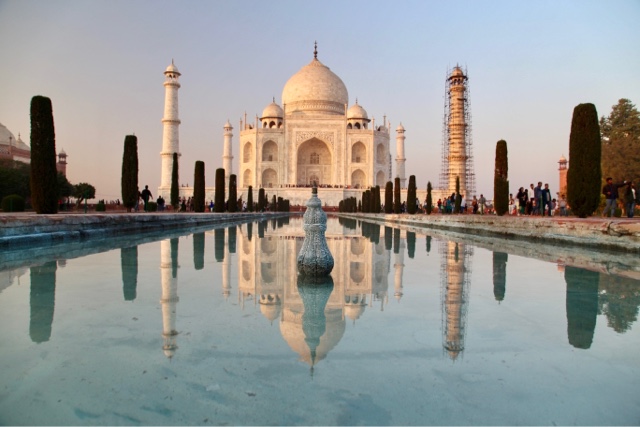
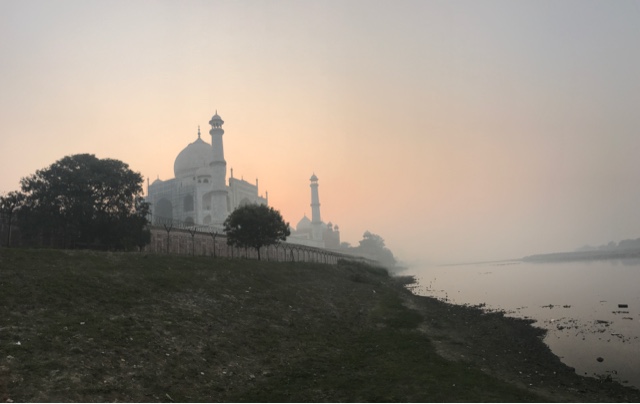
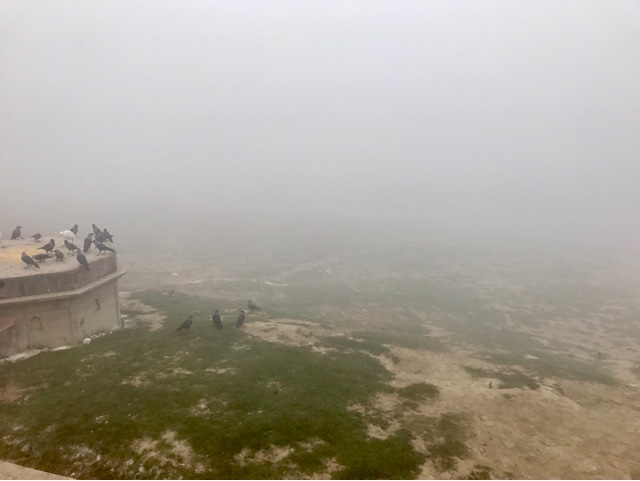
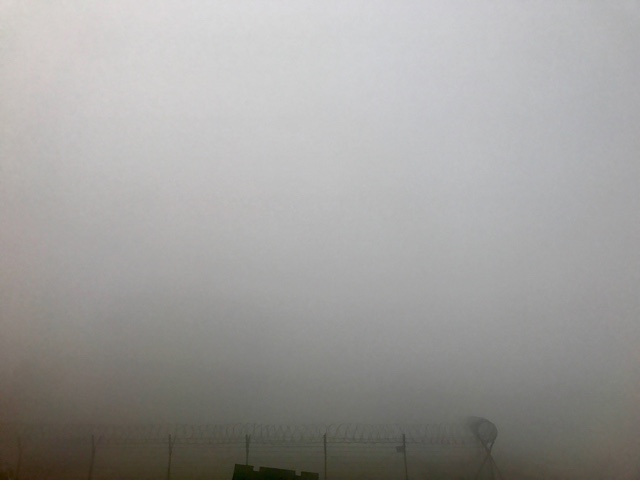

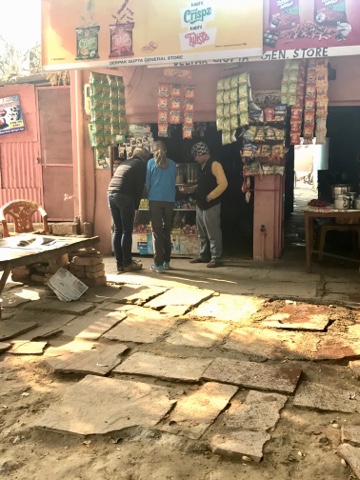
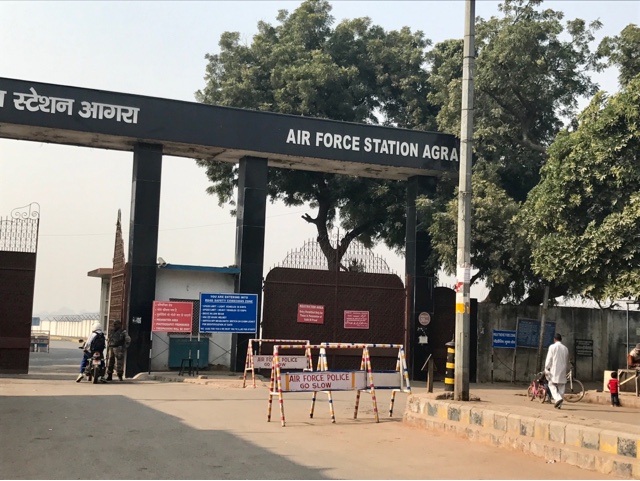
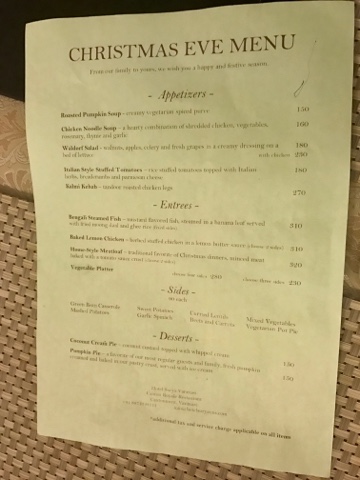
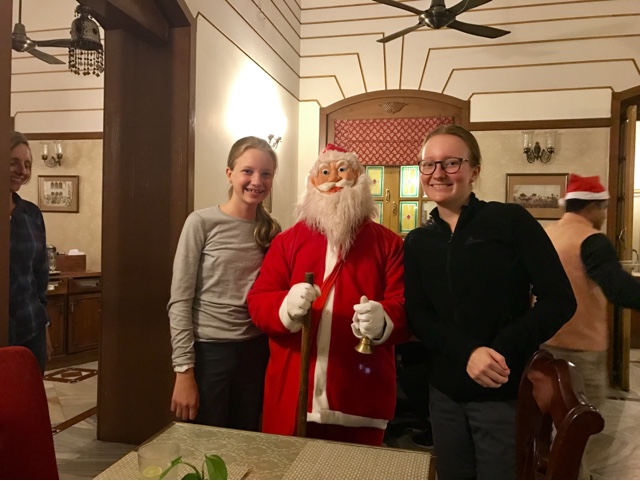
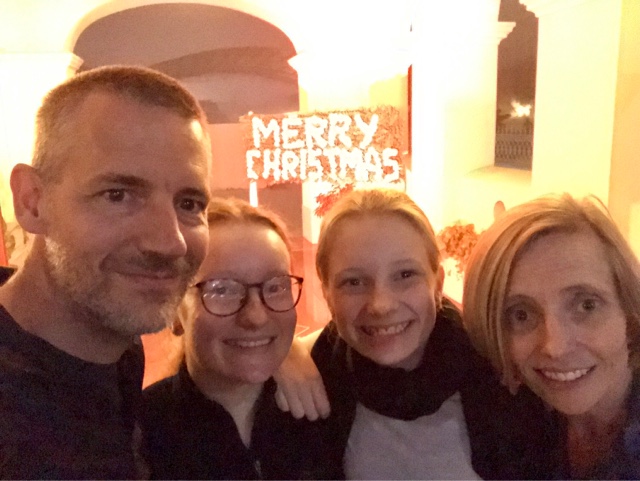
Comments are closed